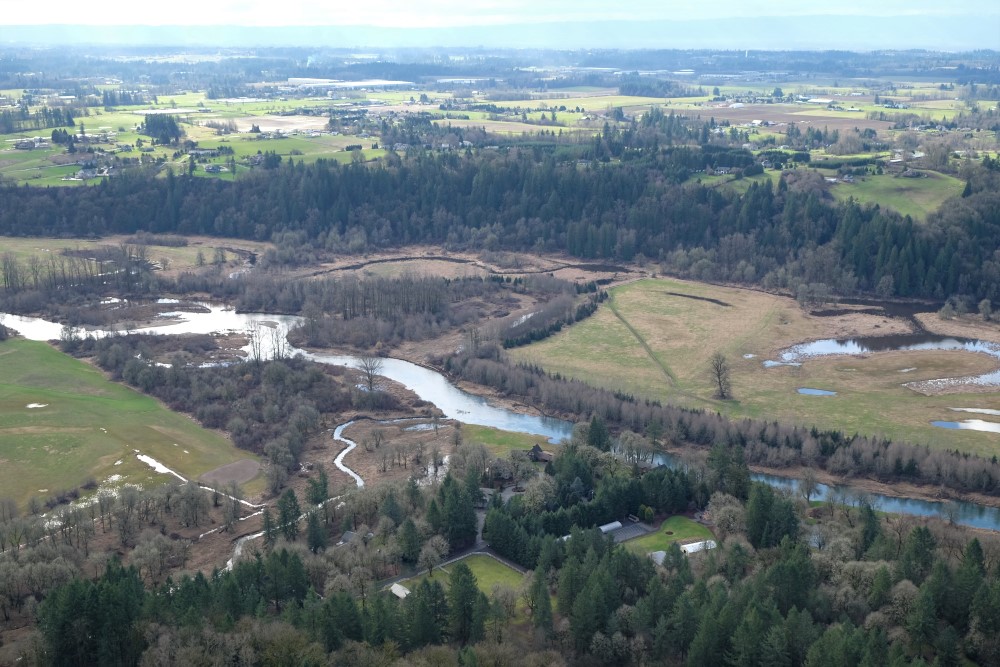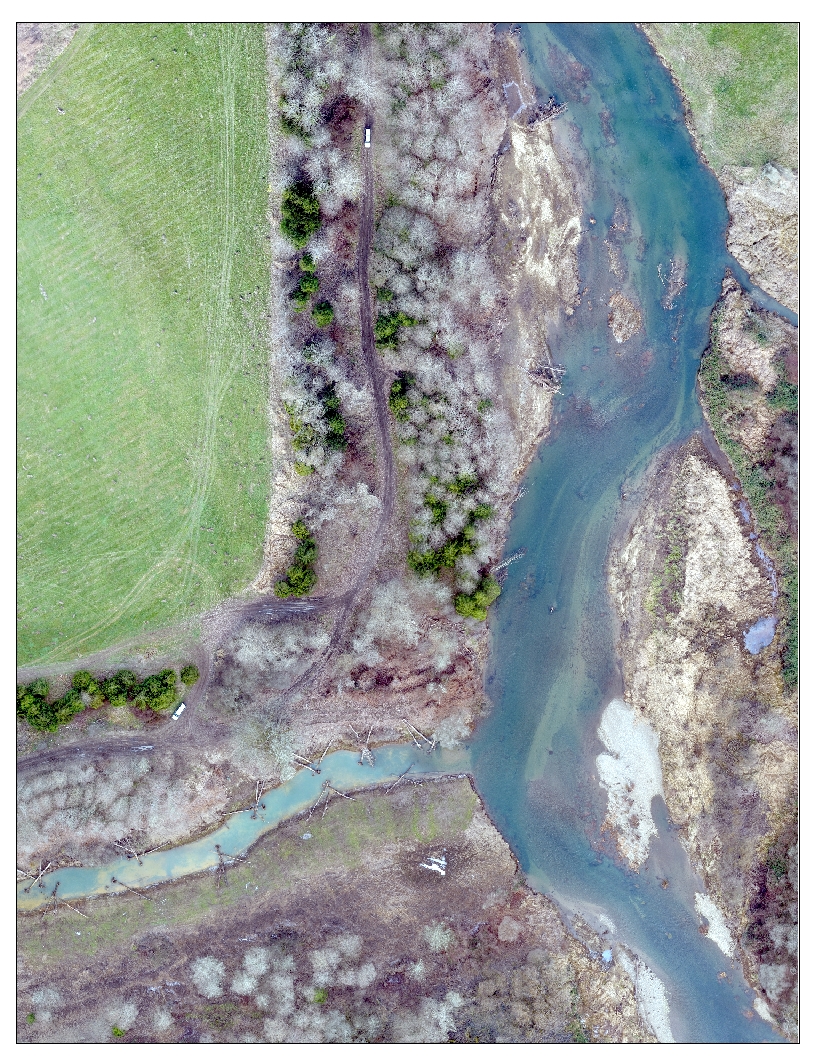The East Fork Lewis River (EFLR) is an important stream in the lower Columbia River system. It is one of the few undammed rivers with no hatchery programs, and supports five runs of native fish including fall chinook, winter & summer steelhead, coho and chum. It has been a designated wild steelhead genetic sanctuary since 2014. In 2017, the Estuary Partnership worked with local partners to restore two side channels along the river for salmon and steelhead.

While the EFLR supports several salmonid stocks, the river and riparian areas have been impacted by dredging, mining, deforestation, grazing, and agriculture. Off-channel and floodplain habitats are critical for juvenile salmon and were historically abundant along the EFLR, but today these habitats are rare.
Construction crews with Aquatic Contracting excavated the side channels to reconnect them to the EFLR, allowing salmon to access critical off-channel habitat. Crews also found and removed an old truck embedded in the stream bank. In addition, through the project we added more than 175 pieces of large wood to the mainstem and side channels to create pools for salmon rearing, removed invasive plants, and replanted 12 acres of native riparian trees and shrubs to shade and cool the water.
This project is part of a large-scale, multi-phase project to restore critical habitat and thermal conditions for juvenile salmonids on the East Fork Lewis River between La Center and Daybreak, Washington. Improving fish access to habitat and the quality of habitats along the EFLR provides opportunities for migrating salmon to feed, rest, and escape high flow conditions. Songbirds, waterfowl, beavers, amphibians, reptiles, lamprey, and other wildlife will also benefit from the restoration.

Additional Contractors: Inter-Fluve provided engineering design services, and Sound Native Plants revegetated the site.
-
Actual Miles Restored
1.00
-
Reach
F
-
Start Year
2015
-
End Year
2017
-
Total Acres
12
-
Type
Habitat